“Stainless steel sheet metal parts provide excellent strength, durability, and a sleek finish in countless applications, from industrial machinery to consumer electronics.”
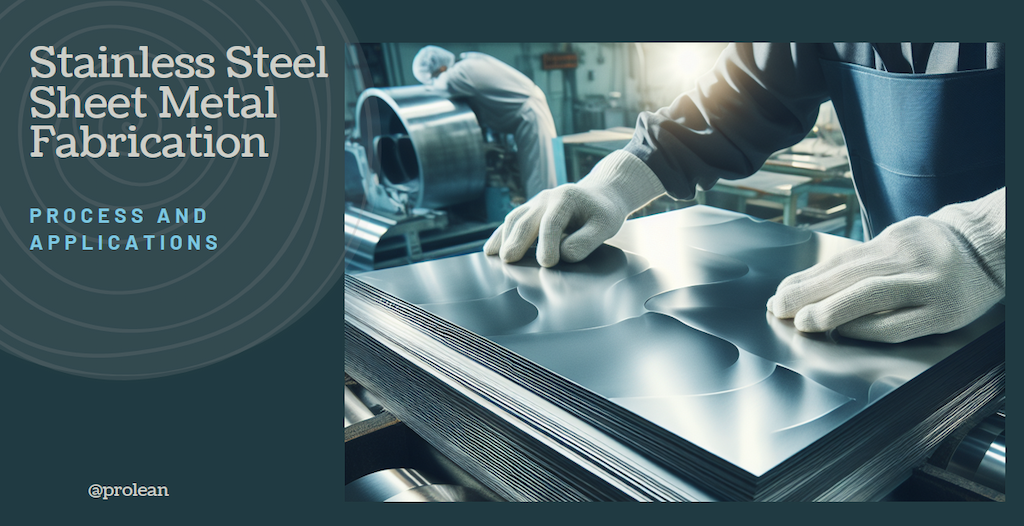
Stainless steel is a high-strength metal alloy used in different applications. The manufacturers apply different methods & approaches to convert it into functional parts or products. Hence, Stainless steel sheet metal fabrication is one of those approaches. It shapes the stainless steel sheets into design parts employing various fabrication techniques, such as CNC laser cutting, sheet metal bending, forming, stamping, joining, etc.
Until the end of this article, we will explore different stainless steel grades, fabrication techniques, advantages, applications, and more.
What is Stainless Steel Sheet Metal Fabrication?
It is the combination of suitable fabrication techniques to manipulate raw stainless steel sheets into the desired shape or structure. Meanwhile, the sheets come in different grades, each with an individual set of properties.

Stainless steel sheet fabrication
The stainless steel sheet metal fabrication processes typically involve four steps: cutting the sheets into the required size, forming, assembly, and surface finishing. Subsequently, there are different techniques to execute each of these steps. Thus, it is an intricate process that requires experience and advanced machinery to handle this fabrication.
Table: Stainless Steel-100 Properties. Source
| Property | Value |
| Density | 23°C g/cm³ |
| Strength | 510 MPa |
| Thermal conductivity | 100°C W/m/°K to 200°C W/m/°K |
| Elongation | 10% |
| Tensile – Yield strength (0.2%) | 137 GPa |
The fabrication parts are popular in many industries due to two main reasons: the properties of steel and the versatility of sheet metal fabrication techniques. This combination produces high-strength, durable, and corrosion-resistant parts to address countless manufacturing needs.
Try Prolean Now!
What are the Stainless Steel Materials for Sheet Metal Fabrication?
The stainless steel grades refer to the distinct compositions and properties of stainless steel alloys, made to suit various applications and conditions. The common grades of stainless steel sheets for metal fabrication are 301, 304, 316, 410, and 430. These grades include a unique percentage of chromium, nickel, carbon, molybdenum, and other alloying elements, along with iron
1. Stainless Steel 304
It is the most commonly used grade of stainless in sheet metal fabrication projects. The SS 304 contains 18-20 % chromium, nickel 8-10.5%, and carbon up to 0.08%, along with others. It provides a balance of material properties and affordability. Subsequently, 304 grade is known for formability, weldability, good strength, and corrosion resistance.
The fabrication of this grade is preferable for kitchen equipment cladding, handrails, brewing and dairy processing equipment, chemical containers, heat exchangers, and automotive & aerospace structural components.
2. Stainless Steel 301
The composition of 301 is approximately 16-18% chromium, 6-8% nickel, carbon up to 0.15%, and traces of silicon, sulfur, and phosphorus. The higher chromium and nickel content confers excellent corrosion resistance and strength. Next, it is ductile and can undergo significant hardening through cold working.
Stainless steel 301 sheets are suitable for aircraft structural parts, conveyor belts, springs, automotive components, kitchen appliances, utensils, etc.
3. Stainless Steel 316
It is an austenitic chromium-nickel stainless steel, also known as marine-grade steel. The difference from 301 is that it contains an additional element, molybdenum, which enhances its resistance to corrosion. Next, the composition includes about 16-18% chromium, 10-14% nickel, 2-3% molybdenum, and carbon up to 0.08% with manganese, silicon, and phosphorus.
The SS 316 sheets are used to create parts for marine hardware, food & chemical processing machinery, medical & surgical instruments, and more.
4. Stainless Steel 410
The 410 grade is martensitic stainless steel, which provides high strength and mild corrosion resistance. It includes about 11.5-13.5% chromium and up to 0.40% carbon but does not contain nickel. SS 410 sheets are known for their high strength and hardness, which can be achieved through heat treatment. Furthermore, it can maintain its strength even at high temperatures.
The fabrication of SS 410 sheets is ideal for kitchen utensils, automotive exhaust manifolds, petrochemical pumps & valves, boilers, and turbine parts.
Related: Comparing 304 vs 316 Stainless Steel: Key Differences & Applications
The Process of Stainless Steel Sheet Metal Fabrication
Stainless steel fabrication involves a series of steps. The cutting technique is employed to cut the sheets into small sizes. Then, the small sheets are bent or formed into to desired shape. Finally, assembly combines the individual parts.
Let’s discuss each step in brief.
Step 1. Cutting of Stainless Steel Sheets
There are two sheet metal cutting processes for stainless steel sheets: shear and non-shear. The shear-cutting methods, such as mechanical cutting, punching in sheet metal, notching, and sheet metal blanking use metal shearing forces to cut the sheets. In contrast, no-shear cutting cuts without shearing forces, such as plasma cutting, laser cutting, and water jet cutting. Instead, these methods use heat or intense water pressure to cut the stainless steel sheets.
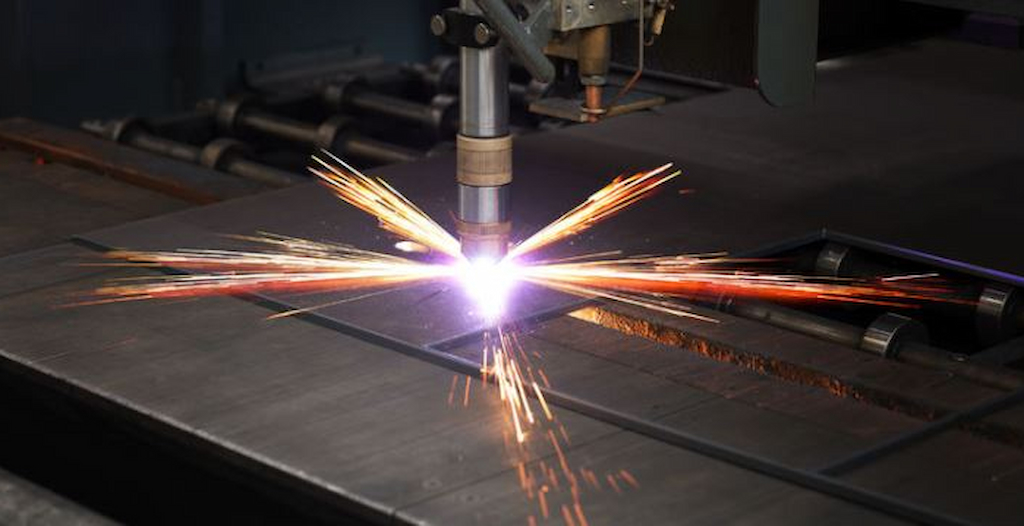
Plasma cutting of stainless steel
The shearing is suitable for straight cuts with relatively less precision, while non-shear methods are ideal for precise and intricate cuts. Furthermore, water jet cutting is especially preferred in applications where heat can damage the original properties.
Step 2. Bending or Forming of Worksheet
Next, bending or forming gives the shape to the cut sheets. A force bends stainless steel at the intended angle without removing any material. The force can be applied by press brakes or roll bending machines. If you bend the sheet from press brakes, it needs the die of bending shape, such as V, U, or customized.
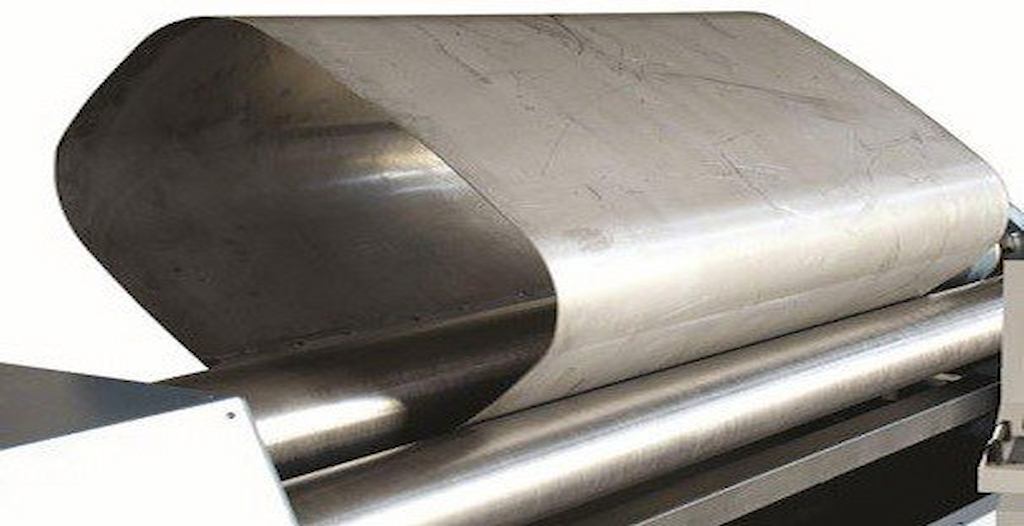
Stainless steel sheet bending
When bending can not achieve the required geometry, sheet metal forming comes into play. At the same time, there are different forming techniques like sheet metal roll forming, sheet metal stamping, sheet metal hemming, and sheet metal deep drawing. However, each bending and forming technique has limitations on sheet thickness and bend radius.
Step 3. Assembly of Bent or Formed Stainless Steel Parts
The assembly involves joining the bent or formed individual pieces to form a final product. Some typical joining techniques include fastening, riveting in sheet metal, soldering, sheet metal welding(TIG & MIG), and adhesion. However, which one to use depends on the design and specifications.
The parts alignments should be accurate during assembly because misalignment can lead to functional or aesthetic issues. Therefore, it requires skill and experience in assembly handling.
Step 4. Post Processing or Surface Finishing
After assembly, stainless steel sheet metal parts go for surface finishing. The finishing is essential for aesthetic appeal and functionality in some cases. It also protects the parts from the environment and provides the desired smoothness.
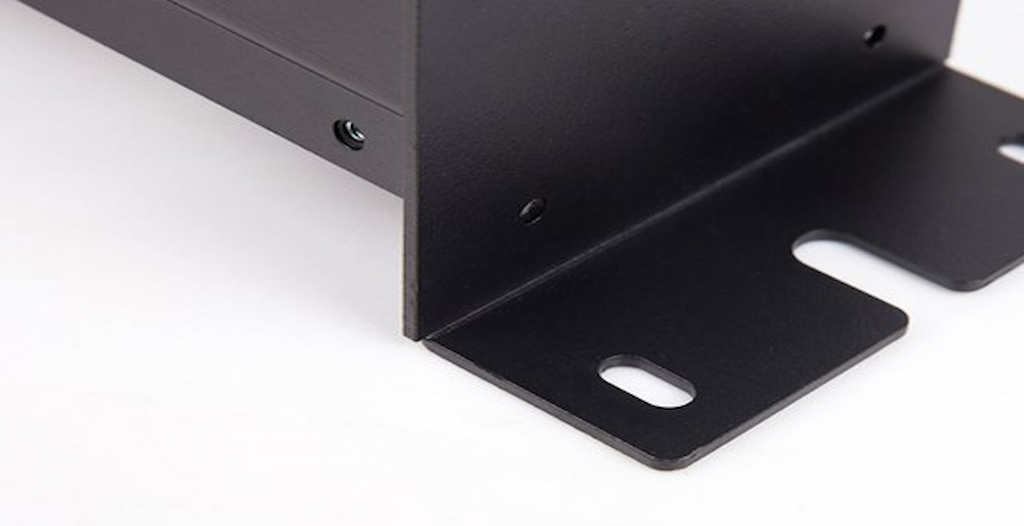
Stainless steel part after surface finish
The following are the standard surface finishing techniques for stainless steel parts.
Try Prolean Now!
Stainless Steel CNC Machining Vs. Sheet Metal Fabrication
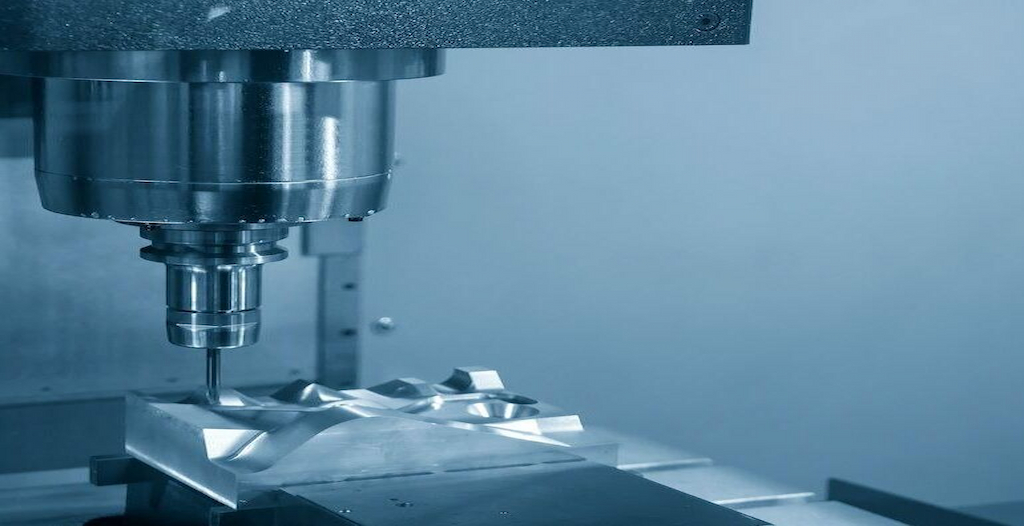
Stainless steel CNC machining
CNC machining is another manufacturing technique to convert raw stainless steel into functional products or components. Instead of fabrication techniques, it utilizes CNC machines and tools to remove the material and shape the workpiece. The computer control allows tools to precisely move across predetermined tool paths and create the final product.
Table: Stainless Steel CNC Machining Vs. Sheet Metal Fabrication
| Aspect | Stainless Steel CNC Machining | Sheet Metal Fabrication |
| When to Use? | It is suitable for high-precision, complex parts with intricate geometries. | Suitable for creating larger, thinner parts and enclosures in large-volume production. |
| Applications | Aerospace & automotive parts, surgical instruments, high-precision gears, custom bearings, complex brackets, engine parts, tooling and fixtures, rapid prototyping | Electronic enclosures, HVAC ducts, automotive body panels, storage tanks, industrial shelving, and signages. |
| Precision | High precision with tight tolerances( as low as ± 0.005“); capable of producing intricate details, | Less precise than CNC machining, and depends on sheet thickness. |
| Complexity | Can handle highly complex designs. | More suited to simpler, 2D shapes, low complex designs, and patterns. |
What are the Benefits and Limitations?
Stainless steel is widely used in sheet metal fabrication due to its many benefits, countless properties of stainless steel, precision fabrication techniques, and speed.
Stainless Steel Sheet Metal Fabrication Benefits
- The chromium content on SS provides a protective layer to resist rust and corrosion.
- Stainless steel sheets are incredibly durable and maintain their integrity over time.
- Excellent strength while being relatively lightweight.
- The non-porous surface of parts from the SS sheet makes it easy to clean and disinfect.
- It can withstand high temperatures, making it suitable for high heat exposure.
- SS sheets can be easily fabricated into complex shapes and sizes.
Limitations of Stainless Steel Sheet Metal Fabrication
- The material cost could be more expensive since it is generally more expensive than carbon steel or aluminum.
- Stainless steel tends to work hardening faster than other metals, making it challenging to cut & form or machine.
- Although it has a high strength-to-weight ratio, stainless steel is still heavier than materials like aluminum.
Applications of Stainless Steel Sheet Metal Fabrication
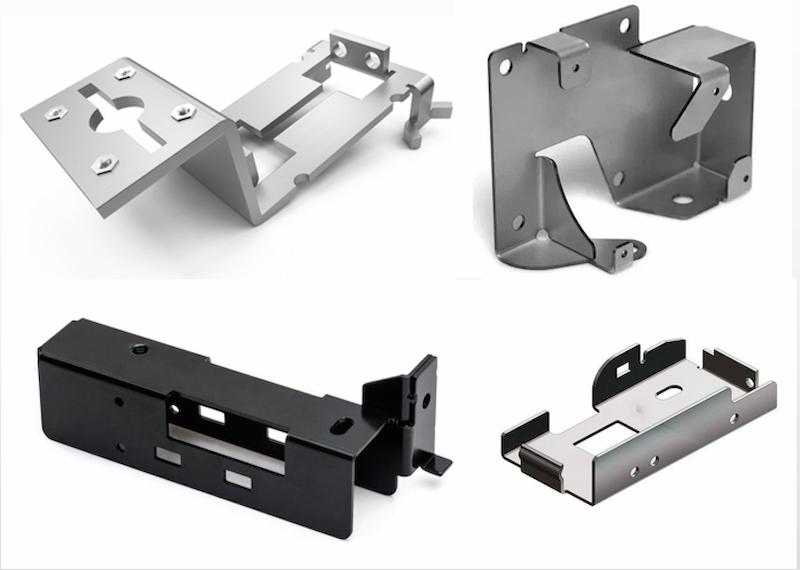
Examples of stainless steel sheet metal applications
Stainless steel sheet metal parts are everywhere, from consumer goods to ships on the ocean. The mechanical and physical properties of Stainless steel and the capabilities of sheet metal fabrication allow to make parts that can solve diverse industrial needs.
Let’s look at the applications in each industry.
Table: Applications of Stainless Steel Fabrication
| Automotive | Exhaust systems, door frames, body panels, engine mounts, radiator grilles, chassis components, hood and trunk lids, and bumpers. | Durable, corrosion-resistant parts with a high-quality finish, are essential for automotive parts. |
| Aerospace | Wing skins, cargo body door, fuselage panels, exhaust systems, seat frames, interior cabin panels, etc. | The high strength-to-weight ratio and corrosion resistance of stainless steel provide safe and durable aerospace parts. |
| Medical | Medical trays and containers, sanitary surfaces, surgical instruments, orthopedic beds, cabinetry, operating room panels, and medical imaging machines. | SS grade also has hygienic and resistance to sterilization properties. |
| Food and Beverage | Processing equipment, conveyors, refrigeration units, sinks and countertops, brewing tanks, and food display cases. | The non-reactive nature if SS ensures no contamination, while its ease of cleaning maintains hygiene. |
It is also popular in other industries like electronics, oil & gas, Renewable energy, construction, and agriculture. The electronic enclosure, mounting brackets, and shielding components are examples of electronic applications. On the other hand, the agriculture industry uses SS fabrication for irrigation systems, dairy equipment, agricultural machinery, and others.
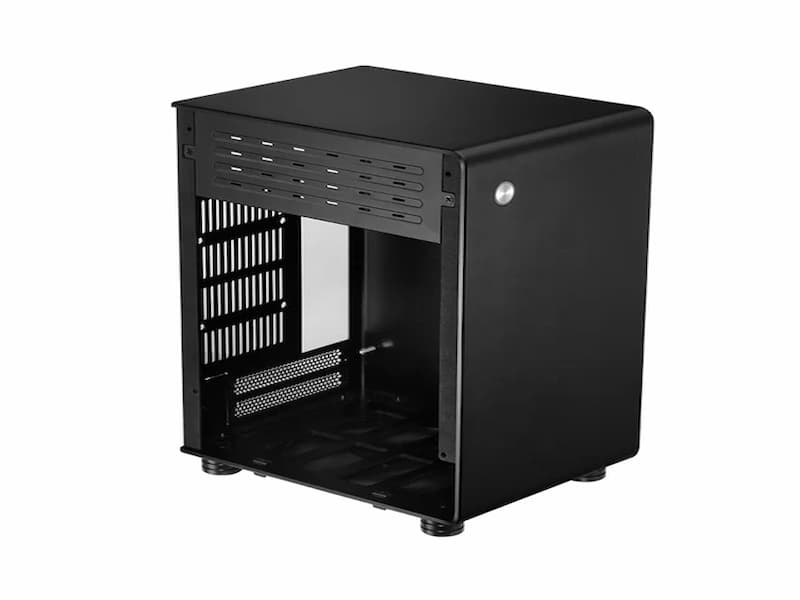
Custom Stainless Steel sheet metal enclosure
Furthermore, custom sheet metal fabrication can make any unique or challenging project. In Custom fabrication, each techniques are adjusted to meet the specific requirements and functionality of a unique need.
Try Prolean Now!
We have the Experience and Technology to Fabricate your Stainless Steel Sheet Parts
The Sheet metal fabrication of stainless steel is an intricate process. It needs execution correct techniques with many considerations. At Prolean, we understand this and handle every project with the utmost attention and precision. Our Stainless Steel Sheet Metal Fabrication services range from Stainless steel CNC machining services, CNC Laser Cutting, and Plasma cutting to Sheet metal Bending and Forming services like Stamping.
We have experience in converting stainless steel sheets for different manufacturing needs. Our team of engineers and advanced machineries are ready to tackle any complex project. If you are looking for related solutions, request a quote to start your fabrication project.
Read more:
- The Ultimate Guide to Reading 2D Drawings for Sheet Metal Fabrication
- Sheet Metal Fabrication Cost: Everything You Need to Know
Conclusion
The properties of stainless steel are very beneficial for different parts, components, and machinery across industries. Sheet metal fabrication techniques achieve the desired shape or structure from stainless sheets to utilize those properties. However, the execution of the right techniques with the perfect sequence can only ensure precise stainless steel sheet metal fabrication results.
FAQs
How are stainless steel sheets made?
They are made by melting iron, chromium, nickel, and other elements, then rolling the mixture into thin, flat sheets of desired thickness.
What type of stainless steel is most commonly used in fabrication?
The SS 304 grade is the most commonly used stainless steel in fabrication due to excellent corrosion resistance and formability.
Can you use any fabrication techniques to shape the stainless steel sheets?
No! The choice depends on the specific properties of the steel grade.
Can you fabricate stainless steel sheets of any thickness?
No! The compatible thickness ranges from very thin gauges, like 0.5mm or 0.02 inches, to thicker sheets, like 6mm or 0.25 inches(approx.).
Where exactly stainless steel sheet metal fabrication parts are used?
They are used in the automotive, construction, aerospace, medical, electronics, food processing, and consumer goods industries.
How much does stainless steel sheet metal fabrication cost?
It varies widely depending on the complexity, steel grade, and the specific fabrication processes required. However, it is a cost-effective than other traditional methods.
Resources
- Sasikumar Samuthiram, 2013. EFFECTIVE PROCESS PARAMETERS IN SELECTIVE LASER SINTERING – Scientific Figure on ResearchGate. Retrieved from: https://www.researchgate.net/figure/Properties-of-stainless-steel-100_tbl1_303486961
- Piscopo, G. (2024). Investigation of dimensional and geometrical tolerances of laser powder-directed energy deposition process. Precision Engineering, 85, 217-225. https://doi.org/10.1016/j.precisioneng.2023.10.006




0 Comments